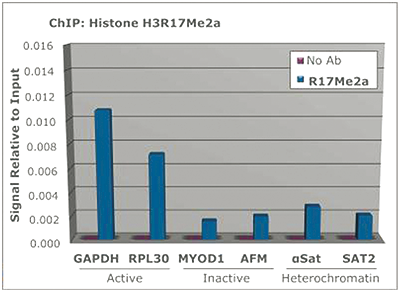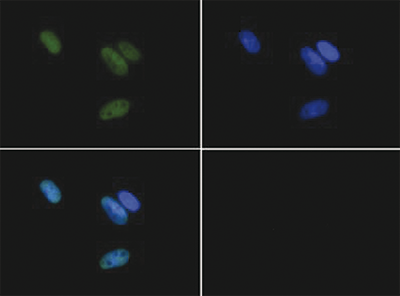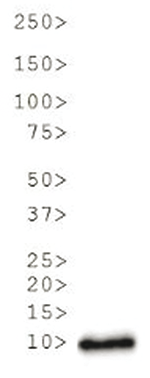Chromatin is the arrangement of DNA and proteins in which chromosomes are formed. Correspondingly, chromatin is formed from nucleosomes, which are comprised of a set of four histone proteins (H2A, H2B, H3, H4) wrapped with DNA. Chromatin is a very dynamic structure in which numerous post-translational modifications work together to activate or repress the availability of DNA to be copied, transcribed, or repaired. These marks decide which DNA will be open and commonly active (euchromatin) or tightly wound to prevent access and activation (heterochromatin). Common histone modifications include methylation of lysine and arginine, acetylation of lysine, phosphorylation of threonine and serine, and sumoylation, biotinylation, and ubiquitylation of lysine. In particular, dimetylation of H3 Arg17 (H3 R17Me2) has been linked to gene activation. Coactivator-associated arginine methyltransferase-1 (CARM1) methylates Arg17 with its protein arginine methyltransferase (PRMT) catalytic core. Activation of this modification is linked to transcription hormone response promotors, as well as cell fate regulation. Interestingly, H3 methylation of R17 and R26 contributes to greater pluripotency potential of stem cells, while downregulation of this PTM increases differentiation.





